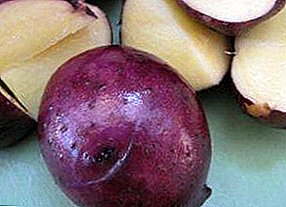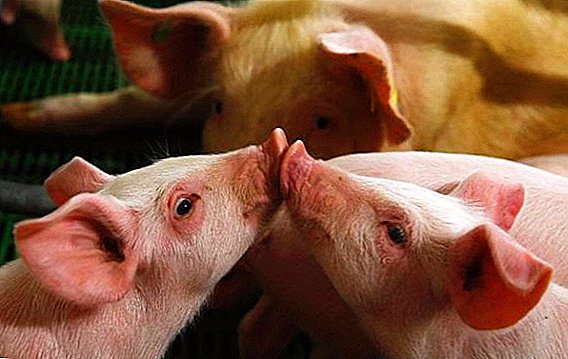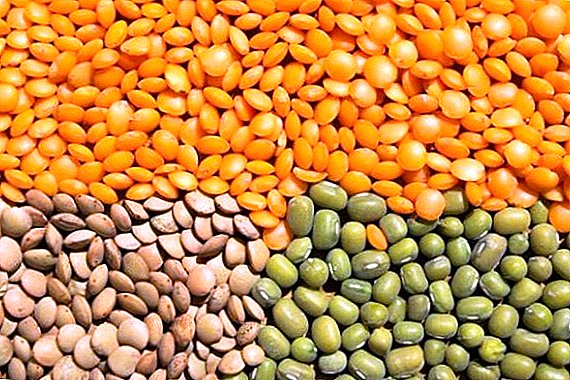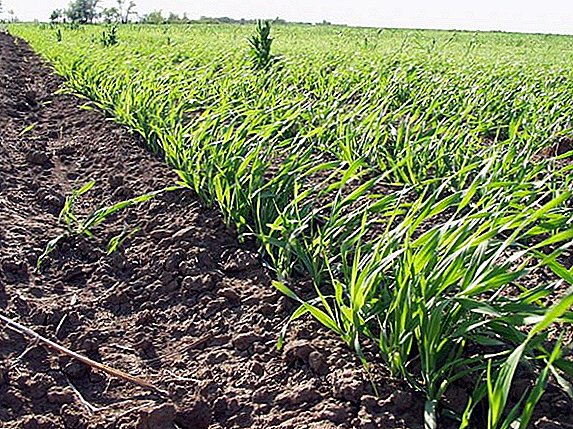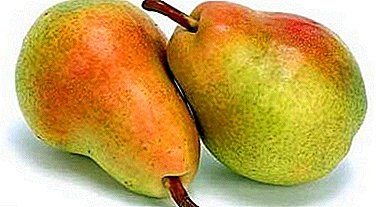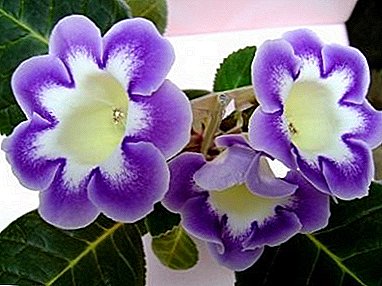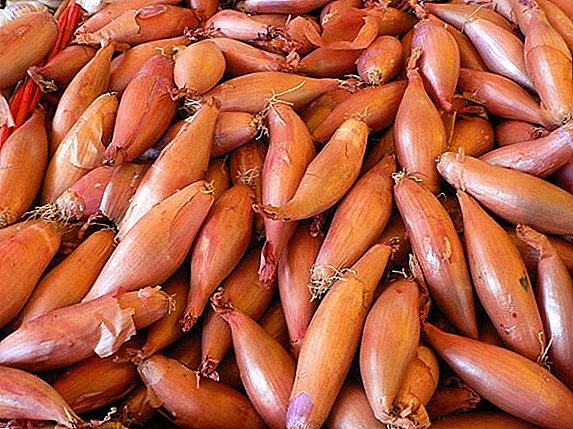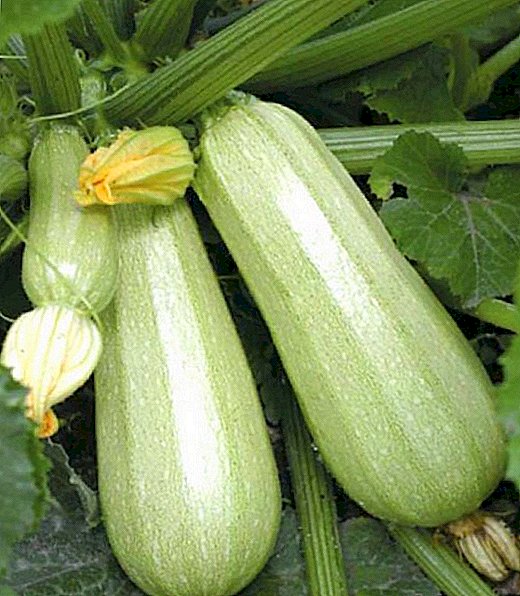 As an alternative to pumpkin, zucchini has become a favorite vegetable for many. It is used in a large number of different dishes and marinated for the winter as well. Today there is a huge selection of varieties of this useful and tasty vegetable.
As an alternative to pumpkin, zucchini has become a favorite vegetable for many. It is used in a large number of different dishes and marinated for the winter as well. Today there is a huge selection of varieties of this useful and tasty vegetable.
Foreign hybrids are especially popular. In this article we will talk about one of such representatives of Dutch origin - the Kavili zucchini and the peculiarities of its cultivation.
Description and characteristics of the variety
Variety is a selection and is usually indicated by a special marking F1. Zucchini leaves are dark green in color with whitish specks, they are covered with a rough pubescence. They are quite large and sprawling.
The stem is thick, spiny and has a lighter shade. The internodes "Kavili" are small. The root system of the plant is superficial, occupies more space than the bush itself. 
Did you know? The weight of one zucchini fruit "Kavili" can reach 500 grams!
The flowers are voluminous, bright orange with 5 petals. They tend to bloom within 24 hours, curl up into a tube and die off. The plant is bisexual, annual.
The fruit of this type has an average size. It is oblong, regular cylindrical. At the time of ripening, the fruit reaches a length of 15-22 cm. The color of the fruit is light green, sometimes olive. The flesh is delicate, white color.
It is different, though not very pronounced, but very pleasant taste, it can become a delicacy not only in heat treatment, but also in its raw form. Seed growers claim that each bush variety can produce 4-7 pieces of fruit at the same time.
They go fast. Variety fructifies for quite some time, approximately within 1.5-2 months. Harvest can be expected from early July to August.
The Iskander F1 hybrid variety is among the popular varieties of zucchini.The only drawback of the variety is only that, as from any hybrid, nothing can be grown from its seeds. With the onset of the new season you need to buy new grains.

Features
Although the description of the Kavili zucchini is very similar to the characteristics of any other types of vegetables of a given culture, the variety still has some selection features:
- Representatives of the Kavili plants are parthenocarpic. It is a type of hybrids that can bear fruit even without pollination. In this case, the fruit will not have seeds. This ability is an absolute advantage of this sort of zucchini, because gardeners do not need to worry about his landing site and neighbors, you can safely engage in greenhouse cultivation without insects.
- Zucchini is good because it grows a bush. You will not suffer from extremely bulky and inconvenient weaving, which will occupy the entire site and will impede the harvest.
- 95% of the flowers "Kavili" for women, which makes the variety the most productive.
- The zucchini pulp remains tender, very juicy and does not harden, even if it is perepsel.
- Early ripe variety (the fruit ripens in 40-45 days).
- Requires a large amount of light and heat.
- It has a good presentation.
- Seeds sell already processed, they should be pink.
Did you know? Zucchini is known for its benefits for children, pregnant women and nursing mothers. In its composition, in addition to a large number of other trace elements, contains potassium.
Agrotechnology
Growing this sort of zucchini is not difficult, the main thing is to comply with certain rules of agricultural technology. For this case, you can choose an open area or a greenhouse.
Planting seeds
The hybrid variety requires soil preparation in the fall. Zucchini is inherent to develop well on light sandy and loamy soils, they are able to adapt well in a neutral environment.
This is that you need to dig the soil and make compost. Possible and the second option of harvesting land for sowing seeds. This is loosening with the help of small hay, superphosphate, ash, sawdust of not coniferous wood. 
Important! Zucchini does not like acidic soil, so it must be mixed with dolomite flour.
In the spring, once again digging up the area is not necessary. Soil you just need to fluff with the help of a rake by the end of May - the beginning of June. The seed sowing algorithm is as follows:
- Make holes in the ground a week before the landing process.
- Deepening need to handle humic fertilizer or saltpeter.
- Lay the grain in the hole to a depth of 6 cm.
- Lightly sprinkle with seed.
- Abundantly water the planting site.
- The hole must be sealed.
- Place the mulch with different materials: peat, crushed hay, wood chips.
It is worth paying attention to the distance between the seeds. Grains should be located at the rate of 3 pieces per 1 square. m. Thus, the future bush zucchini will develop normally.
Learn more about the correct planting of zucchini in open ground.It is not recommended to pre-soak or handle Kavili seeds. The fact is that in the production phase, the seeds of hybrids always give in to vitamins and fungicides. The planting material should not be soaked because the protective layer of the preparations will wash off, which will make the grains less qualitative, vulnerable, and, perhaps, nothing will grow from them.
Between the adjacent rows of landing distance can not be less than 1.2-1.5 meters.
Important! In order to avoid diseases and fungi, it is necessary to choose a new place for seeds every year.
Growing seedlings
To grow seedlings, place the seeds in a container with a diameter of at least 20 cm. Until the time when the first shoots appear, which is about 4 days, the seed container should be kept warm at + 23 ... +27 ° С. Dive zucchini is not necessary.
Land for this process is prepared in the same way as for the seeds. Seedlings are recommended to protect from wind, cold and excess moisture.
Even with a slight decrease in temperature, it is necessary to cover the shoots, otherwise their growth will slow down or they will not develop at all.  This method is considered much better than seed cultivation, because it will shorten the time of fruit ripening by 1.5-2 weeks. Approximately a week before landing on the main site, the plant must be hardened.
This method is considered much better than seed cultivation, because it will shorten the time of fruit ripening by 1.5-2 weeks. Approximately a week before landing on the main site, the plant must be hardened.
For this purpose, it is recommended to transfer the containers with courgettes to a room where the daytime temperature can be maintained within +18 ° C, and the nighttime temperature - about +14 ° C. The seedlings of zucchini should be planted to a depth of the first cotyledon leaves.
Growing specifics
The company has several specific cultivation features:
- Experienced gardeners advise that in order to extend the collection of products of such a precocious variety, it is necessary to sow the Kavili grain in parts with an interval of 2-3 weeks.
- The yield will be much higher if you first “warm” the beds. This can be done if you put compost in a small depression in the beds and sprinkle it with earth.
- Be sure to provide zucchini bushes with light. Otherwise, they may lose their taste.
- If you notice lethargy shrub sheets or their unhealthy appearance, immediately remove the affected parts. This will help avoid the death of the entire plant.
- In no case can not be watered "Kavili" with cold water, its temperature should be above 20 ° C.

Breeding
As previously indicated, hybrids cannot be propagated by seed. Accordingly, for this annual plant, there are no other ways other than seedlings.
Care
Zucchini is not a capricious plant in the care, he needs regular watering, fertilizing and loosening the earth.
You will probably be interested to know what to do if empty flowers appear on zucchini.
Watering
Watering "Kavili" is recommended very abundantly, but not very often. Daily moisture zucchini require only in hot weather. They are resistant to drought, but still the leaves may wither.
Watering is done in the morning or in the evening at the rate of 7-10 liters of water per 1 square meter. m square. It is necessary to observe the rule that water should not fall directly under the root, but around the stem of the plant. 
Top dressing
Top dressing plays an important role during the cultivation of any crop, and zucchini is not an exception. It is necessary to fertilize bushes 2-3 times during growth with the help of mineral substances.
It is recommended to carry out this process in this way (1 l per 1 adult plant):
- The first stage of fertilizer is made before the period of flowering "Kavili". Dissolve in 8-10 liters of clean cold water with 20 g of nitrophoska and 1 l of liquid manure.
- The second stage of feeding coincides with the period of flowering culture. To do this, it is necessary to prepare 40 g of wood and 20 g of complex mineral fertilizer for 10 liters of clean cold water.
- Before fruiting, the last feeding procedure is necessary. Take 9 liters of clean cold water and 30 g of nitrophoska.
Loosening
Loosening the land will allow the root system of zucchini to have access to oxygen. Be careful during this process so as not to hurt this very system and not to harm it. Loosen the soil several times a month, while spuding bushes zucchini. 
Diseases and pests
In general, the sort of Kavili zucchini is notable for its good resistance to diseases, fungi and insect pests.
There is a small chance of infection with peronosporia. This will appear in the form of white spots on the sheets, which eventually grow and turn brown.
Subsequently, the sheet begins to crumble and fall off. In order to save the plant, it is necessary to take measures in time: spray the bush with a 0.2% suspension of 80% of “Tsineba”. As a preventive measure against this disease, a full site is cleaned from plant residues since autumn.
The fruit of the zucchini can hit anthracnose. At the same time they will have spots of a pink shade. In this case, spoiled zucchini eat, of course, is prohibited.
The plant itself must be sprayed with Bordeaux liquid (1%) or copper oxychloride suspension. To combat the spider mite, Kavili is treated with the Iskra double effect or Confidor insecticide.  Take care of Kavili zucchini correctly, and its wonderful fruits will surely appear on your table.
Take care of Kavili zucchini correctly, and its wonderful fruits will surely appear on your table.


